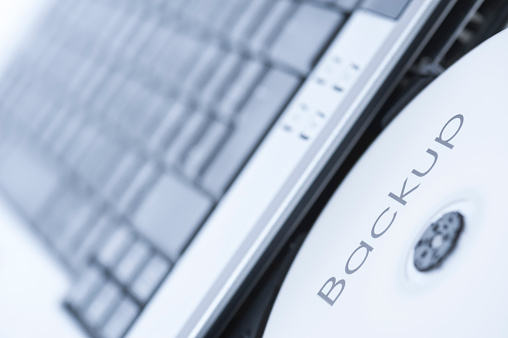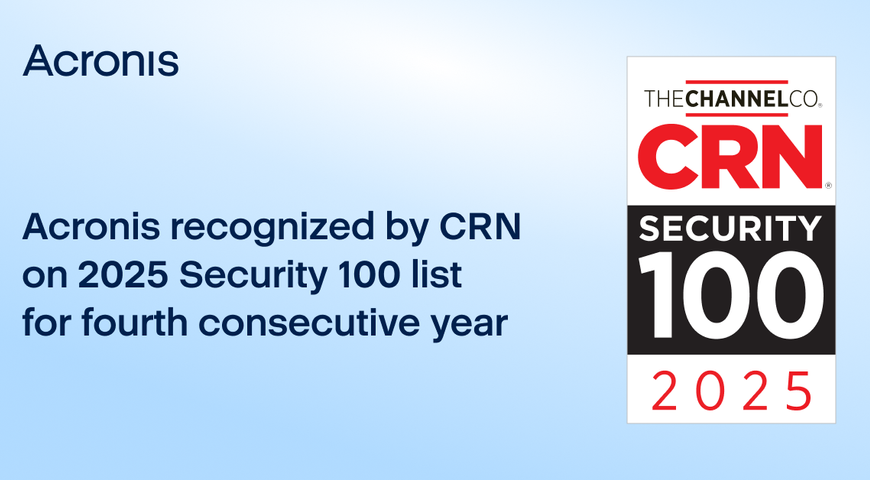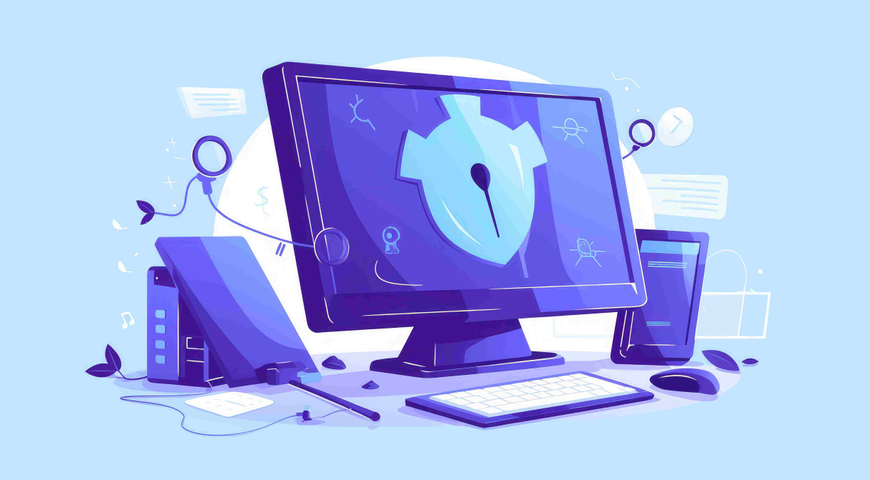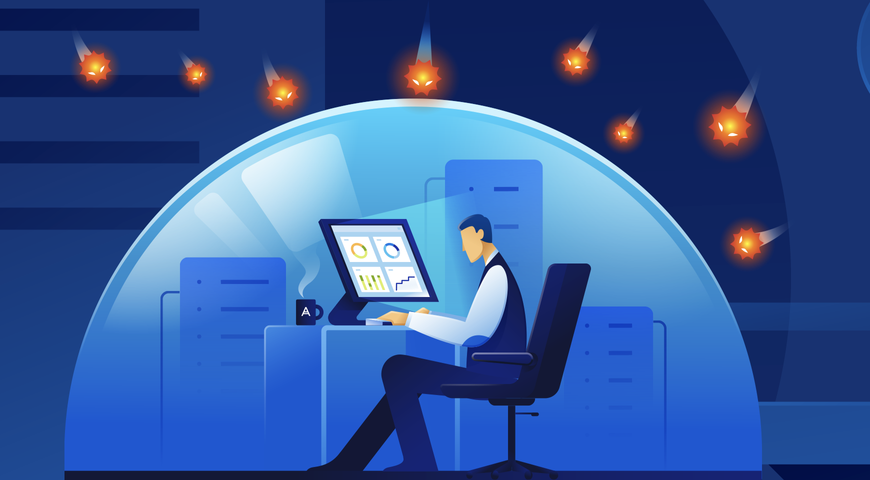What is data backup?
Data backup means creating a copy of the data on your system that you use for recovery in case your original data is lost or corrupted. You can also use backup to recover copies of older files if you have deleted them from your system.
Many businesses and organizations protect their critical data with backup, making it one of the key components of a company's disaster recovery plan and business continuity strategy.
Data backup — Why is it important?
Companies are very dependent on data. Whereas a person cannot survive without air, water, and food, businesses cannot survive without data. Forty percent of companies that do not have proper backup or disaster recovery plans do not survive a disaster.

Every company must designate a backup administrator to handle the entire backup strategy, including backup solutions and tools; the backup scope, schedule and infrastructure; the network and storage; recovery time objectives (RTOs); recovery point objectives (RPOs), etc.
Your company must have a backup strategy and solution in place. Otherwise, you can be a statistic.
Data backup — What to back up?
The backup administrator's primary initial task is to understand, define, and manage what data to back up and protect. To reduce the risk of data loss, you want to back up files and databases and back up your operating systems, applications, configuration — everything you can. If you use virtualization, you want to back up your hosts and management console, not just your virtual machines (VMs). If you use a cloud infrastructure-as-a-service (IaaS), you want to include that in your scope. And don't forget mobile devices — your CEO's tablet could hold critical company data that can be more important than the data stored on some of your servers.
Revisit your backup scope every time you change the infrastructure. New devices, solutions, and services all use data. Your mantra is "back up everything, back up often."
When you choose a backup solution, be sure that it can protect all your data. Otherwise, some data will go unprotected, or you may need multiple backup solutions. For example, if you have a physical server in your data center, a solution that only backs up your VMs isn't enough. Instead, it would be best if you implement multiple, disparate solutions — or better still — use a solution that backs up every device and system in your backup scope.
Types of data to back up
Every business should back up all important data files and documents, including financial data (e.g., credit card transactions, invoices and billings, accounts receivable and payable files, payroll), customer information, vendor information, partner information, communications and email accounts, all applications and databases, project management files, personnel records, the operating system, configuration files and any other files created by your employees.
How often to back up data?
Once you decide on the scope of your backups, the next important decision is how often you need to back up and define a backup schedule.
Your backup schedule depends highly on the volume of data you create daily. Best data protection practices suggest initiating a full backup at least once a week. You can make one outside of business hours or on the weekends.
However, it's crucial to create incremental (or differential) backups once a day between full backups. That way, you ensure that all business- and user-created data is stored securely should a data loss event occur.
While the above follows a general rule of thumb, some businesses manage extensive volumes of data. In such cases, creating one backup per day may not be sufficient. On the other hand, SMBs handling smaller data volumes may opt for a more affordable backup plan, packing less storage space. In such cases, creating daily backups may quickly fill up your storage unless you audit it frequently.
To ensure the right backup frequency approach, companies must calculate the data they handle daily (or weekly) and schedule backups to complement their data creation averages.
Data backup — RPO and RTO
Your colleagues are constantly changing data, and in the event of a disaster, all the data created from the latest backup to the moment of failure will be lost. This period is called the recovery point objective (RPO) — the maximum period that you are willing to lose data on your systems because of an event.
A shorter RPO means losing fewer data, but it requires more backups, more storage capacity, and more computing and network resources for the backup to run. A longer RPO is more affordable, but it means losing more data.
Many small and medium-sized companies usually define an RPO of 24 hours, which means you need to back up daily. With modern backup solutions, you can implement RPOs in as little as a few minutes. You can also have tiered RPOs — shorter RPOs for critical systems and longer RPOs for secondary systems.
Another essential variable is recovery time objective (RTO) — how fast you can recover from the moment of a disaster to the moment you return to normal operations. When systems are down, your company loses money, and you need to recover fast to minimize losses. However, as with RPO, a shorter RTO requires faster storage, networks and technologies — so it is more expensive.
For many companies, an RTO of a few hours is the norm.
Involve your business stakeholders in discussions on system RPOs and RTOs. Once these are defined, you can decide on your solutions and storage.
Data backup solutions
Multiple types of backup solutions and tools are available on the market to deliver different RPOs and RTOs, and handle different scopes. Here are the most popular ones.
Hardware appliances
These appliances often include storage, a 19" rack-mounted device that you install and connect to your network. The machines are easy to install and configure. In most cases, you do not need to provision a separate server or operating system or install any software. The agents installed on your systems perform the backups, and you access the solution via a graphical interface provided with the appliance.
However, remember that if you have a hardware appliance and it fails, you lose your entire data backup solution. Even if you backed up to a secondary location, you need to reprovision the backup solution before recovering, which increases your recovery times.
Software solutions
Software solutions are installed on your own systems and handle the backup process. Many solutions allow you to use existing systems, but some require dedicated servers provisioned just for backup. For these, you need to install and configure the operating system and the backup software. In many cases, you can install the software on a virtual machine (VM).
Software solutions offer greater flexibility than hardware appliances, especially if your infrastructure changes often. Also, software solutions can be less expensive than purchasing a hardware appliance bundle, and they also allow you to choose and provision your own storage.
Cloud services
Numerous vendors offer backup-as-a-service (BaaS) — a cloud-based offering that allows you to provision and run your backups from the vendor's or service provider's cloud infrastructure by installing lightweight agents on your machines. The BaaS is even simpler than software because there are no systems to provision and no operating systems to configure.
Of course, if your organization deals with sensitive data or is subject to regulatory requirements, you will need to check if a BaaS solution is acceptable.
Hybrid data backup solutions
The latest innovation in the backup world is an all-in-one hybrid backup solution, allowing you to install the software or use it as a cloud service. These solutions combine the best of both worlds, making them the best choice for many organizations.
Different approaches to the data backup process
There are three types of data backup vendors offer to ensure the best storage utilization and the best backup/recovery speeds:
Full backup
Copy everything you wish to protect. The first time you back up a system, you want to perform a full backup. But full backups take time, so software providers also resort to other types of data backup.
Differential backup
Differential backup focuses only on the files that have changed since the last full backup. For example, suppose you do a full backup on Sunday. On Monday, you back up only the files that changed since Sunday; on Tuesday, you back up only the files that changed since Sunday; and so on, until the next full backup. Differential backups are quicker than full backups because so much fewer data is backed up. But the amount of data being backed up grows with each differential backup until the next full backup. Differential backups are more flexible than full backups but still unwieldy to do more than about once a day — especially as the next full backup approaches. Differential backups are sometimes called "cumulative incremental backups."
Incremental backup
These also back up only the changed data, but they only back up the data that has changed since the last backup — whether a full or incremental backup. These are sometimes called "differential incremental backups."
How do incremental backups work?
If you do an incremental backup on Tuesday, you only back up the data that changed since the incremental backup on Monday. The result is much smaller, faster backups. With incremental backups, the shorter the interval between the new and last backup, the fewer data there is to be backed up. In fact, with sophisticated backup software like Acronis Cyber Protect, the backups are so small and fast that you can back up every hour or even more frequently, depending on the work you're doing and how important it is to have current backups.
While incremental backups give much greater flexibility and granularity (time between backups), they have a reputation for taking longer to restore because the backup has to be reconstituted from the last full backup and all the incremental backups since.
Specific data backup methods
Alongside the major three, there are several scenario-specific backup approaches.
- Synthetic full backups
In this variation of differential backup, the backup server creates an extra full copy based on the original full backup and data gathered from incremental backup copies.
- Reverse-incremental backups
Here, the complete backup is created regarding the difference between previous backups, starting with the last successful backup. The backup software focuses on the increment at each backup based on the difference compared to the previous day's increment. The increment from the last completed backup is added to the current-day backup.
This enables instant access to the most recent backup version — you won't need to restore all previous increments to recover the complete set and obtain an up-to-date backup. However, finding the last version of a document will require going back to an earlier restore point.
- Incremental-forever backups
Incremental-forever backups capture the entire data set and then add incremental backups to it from a specific point forward. This approach compresses the backup window, enabling quicker data recovery access. The process of backing up only changed data blocks is called "delta differencing."
- Hot backups
Also known as "dynamic backup," hot backups are applied to data available to users during the update process. This approach negates user downtime and ensures optimal productivity.
However, this method carries a potential downside. If the data undergoes changes during the backup process, the resulting copy might differ from the data's final state.
Backup storage
A copy of your data is stored in backup storage, and you must have it selected provisioned, and handy for successful backup (and recovery).
Data backup to local or USB disks
If you have enough capacity on your local disks, you can back up to them or to other removable media (e.g., external USB drives).
Removable media backups are fast and convenient, and you don't need a network. The downside of local backups is that if the system is destroyed by a fire or a flood, your backups can also be destroyed if they are stored in the same location. Also, in many cases, you need to manage these backups on a computer-by-computer basis, which makes it cumbersome for larger environments.
Local and USB disk backups are best for quick backups of a small number of systems and are designed to recover individual files or systems in the event of software failure. (for example, you can back up Windows to a bootable USB, so you'd have it available for recovery if a failure occurs)
Data Backup to network shares and NAS
This is one of the most common storage options. With a centralized NAS (network attached storage), SAN (storage area network), or simple network share, you can store many or all company backups in one place and restore a file, system, or the entire data center in the event of a virus attack or data corruption. Yet as with local disks, NAS and SAN will not help you recover data in the event of a major area disaster, such as a hurricane or typhoon that destroys your entire facility.
Data backup to tapes
To recover from a major disaster, you must store a copy of your data in an off-site location, preferably at least 100 miles from your primary data center.
One of the traditional ways to do that is to store copies of your data on tape devices and physically ship the tapes to a remote location. Modern tape technologies, such as LTO-7, allow you to store up to 2.5 TB of compressed data on a single tape, making them quite efficient if you need to protect large amounts of data.
The downside of a tape backup is lengthy RTOs, as you need to physically ship the tape back when you need to recover data. Also, some backup solutions have limited recovery options. For example, you can recover an entire system from tape but not a single file or folder. In addition, you need a tape drive, autoloader, or tape library to create backups and perform recoveries, and these devices could be relatively expensive.
Data backup to cloud storage
The modern alternative to tape backup is cloud storage. With this solution, you subscribe to a specific storage capacity in the cloud vendor's or service provider's data center. You do not need any hardware as you do with tape drives (unless you rely on private cloud storage), but you do need an internet connection to send backups to the cloud. Your vendor may have ways to eliminate the problems with uploading large amounts of data by offering physical data shipping or an initial seeding program.
Data backup storage — which one is the best?
Every storage solution has drawbacks. To select the right solution, you must develop a storage strategy based on your unique business requirements, RPOs, and RTOs. You also need a data backup solution that follows the industry-accepted 3-2-1 backup approach — store your data in three places, on two types of storage, with one copy stored off-site. Great examples of the 3-2-1 strategy are disk-to-disk-to-tape (D2D2T) and disk-to-disk-to-cloud (D2D2C) solutions. With these solutions, you back up your data to your central network storage and then copy that backup to tape or offsite cloud storage.
Advantages of robust data backup software
- Continuous data protection
Having encrypted data backups ensures no intruder can access them without a decryption key.
Reliable backup software can help your business store all critical data in secure backup storage and develop a comprehensive disaster recovery plan to quickly restore data even if a disaster hits.
- Real-time data security
Having fortified data storage is crucial for all data at rest. However, reliable backup software ensures operational data and data in transit are protected to their teeth. You can apply advanced end-to-end protection for all operational devices and storage media, invoke MFA to manage cloud storage access, and rely on AI-powered anti-ransomware to negate any data loss event.
- Redundant backup systems
Data protection requires backup files in multiple backup systems. With the proper solution, you can backup data to local offline backup, private cloud storage, off-site backup data storage, and even portable removable media.
Having redundant data backups ensures you can retrieve data successfully from data backups regardless of location.
- Large storage capacity
Automated data backups are convenient, and businesses can easily create full backup after full backup without regard for storage space. While physical data storage can fill up quickly, cloud backup storage can scale infinitely to handle more data if needed.
Nevertheless, it's not recommended to duplicate data backups in the same storage media. Ideally, you will regularly audit your backups to keep storage space optimized and reduce costs.
- Efficient data management
Data backup and recovery can be challenging unless you have a comprehensive plan in place.
A robust solution can procure a step-by-step plan for your backup process and disaster recovery protocols. In addition to frequent backups, you'd be able to restore only the data critical for day-to-day operations to avoid downtime in the event of a disaster.
- Costs management
Scalable solutions let you scale up or down on demand to spend the optimal amount on data security and data protection.
What's more, countering data loss means you won't need to rebuild essential company data, saving you time, effort, and ultimately, expense.
- Efficient company performance
Manual data backup can be incredibly overwhelming — especially for larger organizations. If your company relies solely on local servers, you'd need a dedicated team to handle the backup, audit, management, and recovery of critical data files.
On the other hand, a proper solution will store data effectively, while your employees can focus on business-critical tasks unhindered.
- Enhanced competitiveness
Data is the bread and butter of modern business processes. Accessing client data from anywhere, anytime, relates to higher customer satisfaction. The latter, in turn, translates to a more loyal customer base and a better brand image.
Efficient data management puts your company ahead of the competition and ensures you stay at the top of your game in the long run.
- Compliance benefits
Modern compliance legislation invokes a legal need to store data accordingly. Failure to follow the guidelines may result in fines or legal ramifications.
A comprehensive data backup solution can cover all compliance aspects, enabling easy tracking for auditing purposes.
The 3-2-1 backup strategy
To ensure your data is safe — no matter what happens — you must follow the 3-2-1 backup strategy. It stipulates that you store your data in three places, on two types of storage, with one copy stored off-site, preferably in cloud backup.
Why do you need a data backup solution?
Your company's survival depends on the survival of your company data. To implement a reliable data backup strategy, define your business objectives — the backup scope, RPOs and RTOs; implement proper solutions; provision the storage or combination of multiple storages; and execute and monitor the backups.
Only then can you be sure that your company can continue to operate safely, even when unforeseen events occur.
About Acronis
A Swiss company founded in Singapore in 2003, Acronis has 15 offices worldwide and employees in 50+ countries. Acronis Cyber Protect Cloud is available in 26 languages in 150 countries and is used by over 20,000 service providers to protect over 750,000 businesses.





